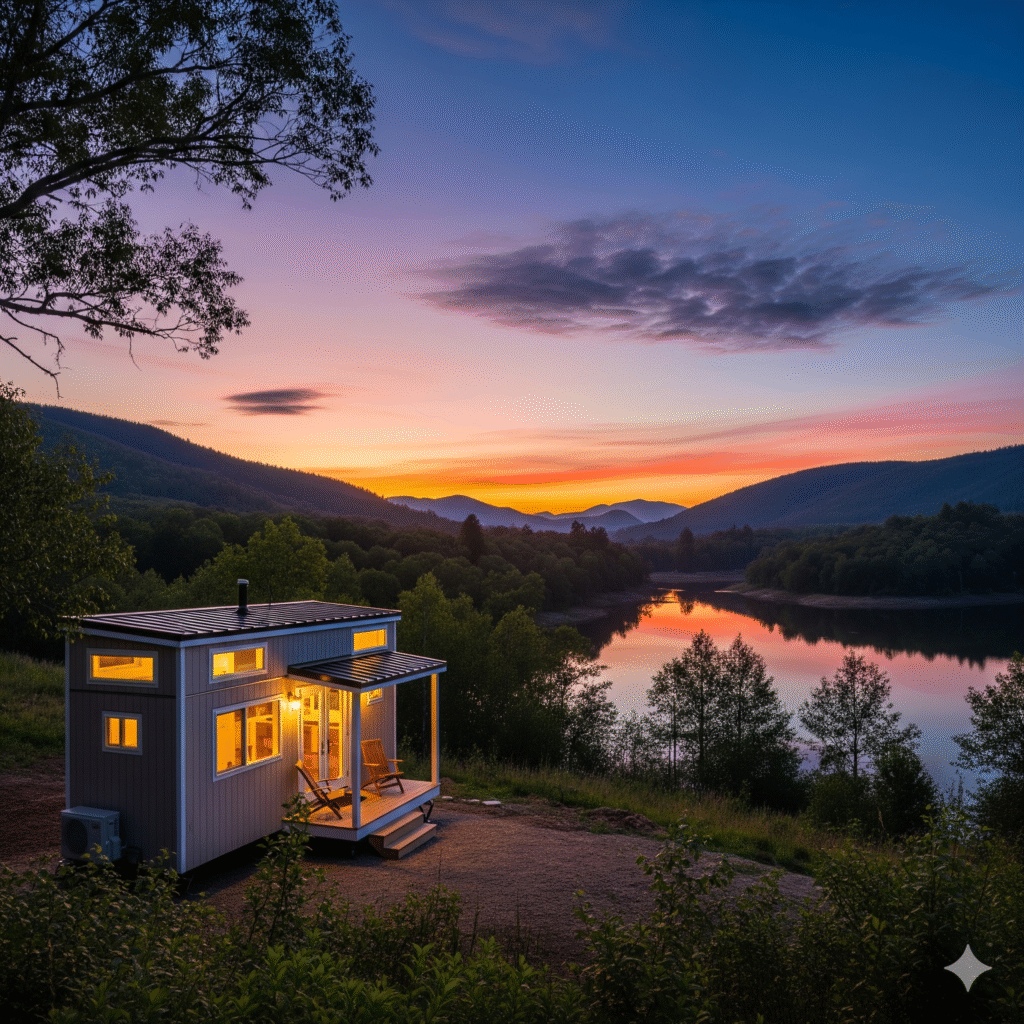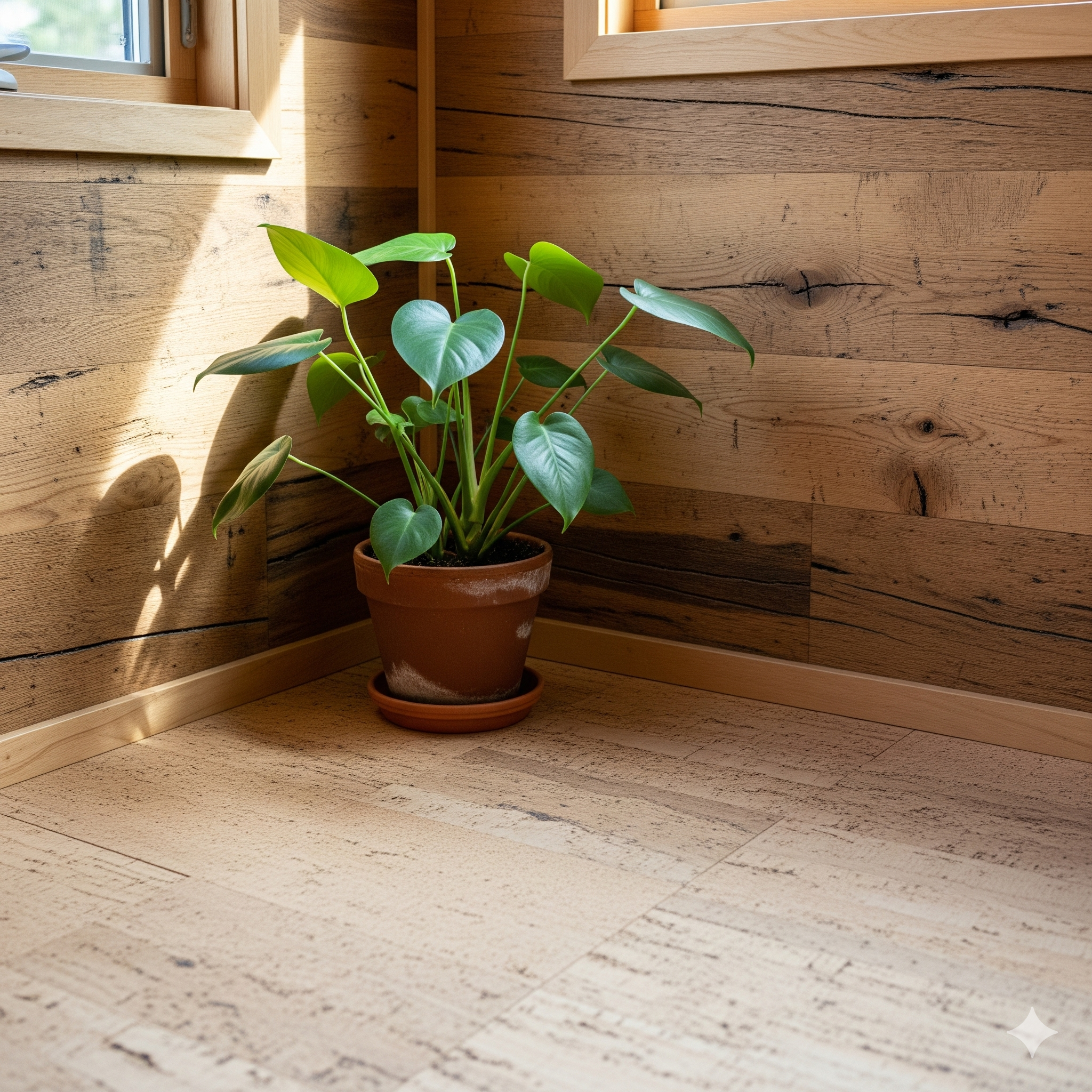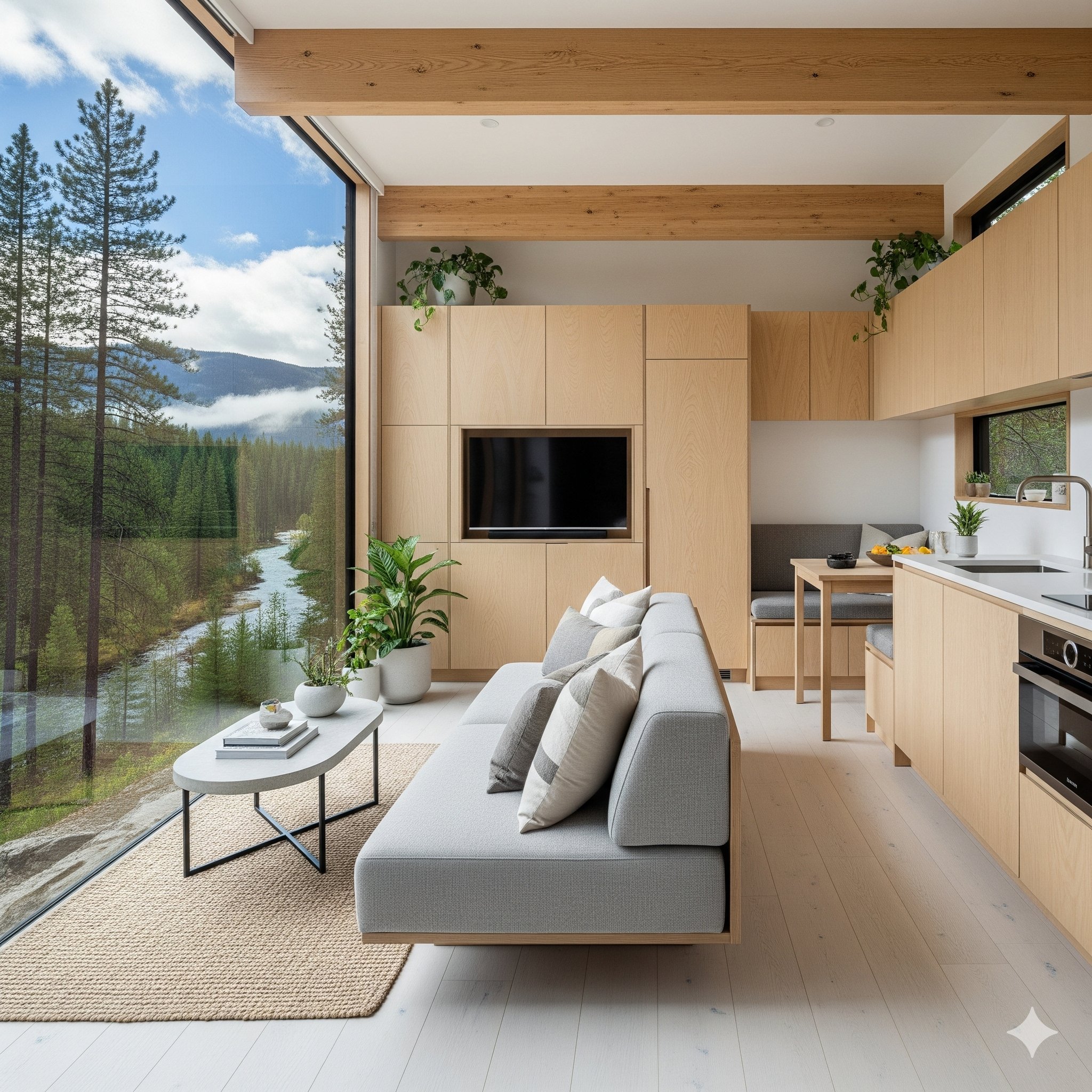Prefab Tiny Homes vs. Custom
Torn between prefab tiny homes and a custom tiny house? Our guide breaks down the pros, cons, costs, and timelines to help you make the perfect choice.
The Big Decision: Prefab Tiny Homes vs. a Custom Tiny House Build
Once you’ve committed to the tiny house dream, you’re faced with your first major decision: how will you bring your home to life? In the world of tiny construction, two main paths emerge, each with a passionate following and a distinct set of advantages and disadvantages. On one side, you have the efficiency and predictability of prefab tiny homes, built in a factory and delivered to your site. On the other, you have the boundless creativity and personal control of a custom tiny house, designed and built from the ground up to your exact specifications. This choice is about much more than just construction; it will fundamentally shape your budget, timeline, and the very character of your new home.
At NeatTinyHome.com, our goal is to empower you with the clarity needed to make this crucial choice with confidence. There is no single “best” answer—the right path depends entirely on your personality, budget, timeline, and how hands-on you want to be. This guide, updated for September 2025, will provide a comprehensive, side-by-side comparison of these two popular approaches. We will delve into the pros and cons of each, examine the differences in cost and process, and help you determine whether the convenience of a prefab model or the total freedom of a custom build is the right fit for you.
Understanding Prefab Tiny Homes: The Pros and Cons
Prefabricated, or “prefab,” tiny homes are constructed off-site in a controlled factory environment and then transported to your location. This building method has gained immense popularity for its efficiency and predictability. The primary advantage is a significantly faster build time. Because construction happens indoors, there are no delays due to weather, and streamlined factory processes can produce a finished home in a matter of weeks or a few months. Cost is another major draw; builders buy materials in bulk, and labor is more efficient, which often results in a lower, fixed price that is known upfront. From a legal perspective, many prefab builders, like the innovative company Boxabl, ensure their models meet specific building standards, and those on wheels often come with crucial RVIA certifications, which can simplify insurance and parking. The main drawback, however, is the limited customization. While you can typically choose from a range of finishes and layouts, you are still working within the builder’s pre-set designs and cannot change the fundamental structure.
The Allure of the Custom Tiny House: The Pros and Cons
For the dreamer who wants a home that is a true one-of-a-kind reflection of their personality, a custom tiny house is the ultimate choice. The single greatest advantage is total design freedom. Every detail, from the exact placement of a window to capture the morning sun to the species of wood used for the countertops, is up to you. You have complete control over the quality of materials, allowing you to invest in high-performance insulation, specific non-toxic finishes, or unique reclaimed features. This process can be incredibly rewarding, as you are involved in every step of creating your perfect space. You can see the stunning results of this approach in the unique homes featured in design magazines like Dwell, which often showcase incredible creativity. The cons, however, are significant. The timeline is much longer, often stretching from many months to over a year. The budget is variable and can easily go over the initial estimate as unexpected costs arise. The process also requires a much higher level of involvement from you, whether you’re building it yourself or managing a builder like the renowned Rocky Mountain Tiny Houses.
Head-to-Head: Prefab vs. Custom Comparison
To make the decision clearer, it helps to see the two options compared directly across the most important factors. The table below provides a snapshot of what you can expect from each path. Understanding these trade-offs is crucial, especially when considering the financing process, as lenders may view the two options differently, a topic that financial resources like NerdWallet explore in detail.
| Feature | Prefab Tiny Homes | Custom Tiny House |
|---|---|---|
| Cost | Fixed, known upfront. Often a lower initial price. | Variable, can exceed budget. Higher potential cost for high-end finishes. |
| Timeline | Faster (typically 2-6 months from order to delivery). | Slower (typically 6 months to 1.5 years). |
| Customization | Limited to pre-set layouts, colors, and finishes. | Infinite. Complete control over every aspect of the design and materials. |
| Process | Simpler. You choose a model, sign a contract, and wait for delivery. | Complex. Requires design, sourcing materials, and managing construction. |
Final Thoughts: Which Path is Right for You?
Ultimately, the choice between prefab tiny homes and a custom tiny house comes down to your personal priorities. If your primary goals are speed, a fixed budget, and a simplified, hands-off process, then a prefab home is likely an excellent choice. If, however, you have a very specific vision, want complete control over the quality of your home, and enjoy the creative process of design and construction, then the extra time and effort of a custom build will be a rewarding journey. There is no wrong answer—only the path that best aligns with your dream of a tiny life.
What’s Your Building Style?
Do you lean towards the convenience of prefab tiny homes, or does the creative freedom of a custom tiny house appeal more to you? Share your thoughts in the comments!
Frequently Asked Questions
Are prefab tiny homes lower quality than custom builds?
Not necessarily. While some budget prefab models may use basic materials, many high-end prefab builders use premium materials and construction techniques in a climate-controlled setting, which can result in a very high-quality home. Quality is determined by the builder, not the method.
Is it cheaper to build a custom tiny house yourself?
It can be, but only if you have the necessary skills and tools. A DIY custom build can save you a significant amount on labor costs. However, if you make mistakes that need to be fixed or work inefficiently, the costs can quickly add up to equal or even exceed that of a prefab model.
How does financing differ for prefab vs. custom?
Financing can be easier for prefab homes from established builders, as some have relationships with lenders who understand their product. Lenders may offer RV loans for certified THOWs or modular home loans. A custom build, especially a DIY project, can be harder to finance, often requiring a personal loan or paying with cash.





Post Comment